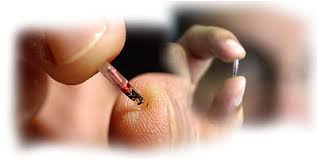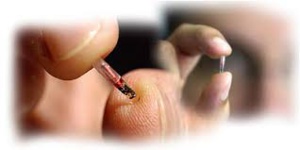It could not be possible to conduct a continuous monitoring of for alcohol consumption in the long-term with the use of a miniature injectable biosensor that makes use of very little power. This new monitoring device has been developed by U.S. researchers at the University of California San Diego (UC San Diego.
One of the major challenges that health intervention officials and doctors find in treatment of diagnosed cases of alcoholism is the absence of any form of tools that could make it convenient for them to continue with routine and regular monitoring.
That problem could be solved by the new device which is essentially a small chip which is of s such size that it is possible to be implanted in the body of a subject or a patient just beneath the surface of the skin. The chip draws power from a wearable device that is attached to the chip wirelessly. Such wearable devices can be a smartwatch or patch claimed the new study. The results of the lab tests and experiments were presented at the 2018 IEEE Custom Integrated Circuits Conference (CICC) which was organized in San Diego from April 8 to 11.
"The ultimate goal of this work is to develop a routine, unobtrusive alcohol and drug monitoring device for patients in substance abuse treatment programs," Drew Hall, an electrical engineering professor at the UC San Diego Jacobs School of Engineering was quoted as saying in a news release. He is the project of this experiment.
The functioning of the chip is quite simple. The device houses a sensor that is sprayed with a coat of alcohol oxidase. This is an enzyme that interacts with alcohol in a selective manner and generates a byproduct which is easily detectable electrochemically and therefore monitorable.
According to the researchers, the size of the device is about one cubic millimeter and this device can be easily injected under the skin of a subject in the interstitial fluid. The cells of the human body are surrounded by this fluid.
The approximate power that the chip consumes in total is about 970 nanowatts. Compared to the power that an average smartphone consumes while making phone call, the consumption by the chip is roughly one million times less.
"We don't want the chip to have a significant impact on the battery life of the wearable device. And since we're implanting this, we don't want a lot of heat being locally generated inside the body or a battery that is potentially toxic," Hall said in a statement
(Source:www.xinhuanet.com)
One of the major challenges that health intervention officials and doctors find in treatment of diagnosed cases of alcoholism is the absence of any form of tools that could make it convenient for them to continue with routine and regular monitoring.
That problem could be solved by the new device which is essentially a small chip which is of s such size that it is possible to be implanted in the body of a subject or a patient just beneath the surface of the skin. The chip draws power from a wearable device that is attached to the chip wirelessly. Such wearable devices can be a smartwatch or patch claimed the new study. The results of the lab tests and experiments were presented at the 2018 IEEE Custom Integrated Circuits Conference (CICC) which was organized in San Diego from April 8 to 11.
"The ultimate goal of this work is to develop a routine, unobtrusive alcohol and drug monitoring device for patients in substance abuse treatment programs," Drew Hall, an electrical engineering professor at the UC San Diego Jacobs School of Engineering was quoted as saying in a news release. He is the project of this experiment.
The functioning of the chip is quite simple. The device houses a sensor that is sprayed with a coat of alcohol oxidase. This is an enzyme that interacts with alcohol in a selective manner and generates a byproduct which is easily detectable electrochemically and therefore monitorable.
According to the researchers, the size of the device is about one cubic millimeter and this device can be easily injected under the skin of a subject in the interstitial fluid. The cells of the human body are surrounded by this fluid.
The approximate power that the chip consumes in total is about 970 nanowatts. Compared to the power that an average smartphone consumes while making phone call, the consumption by the chip is roughly one million times less.
"We don't want the chip to have a significant impact on the battery life of the wearable device. And since we're implanting this, we don't want a lot of heat being locally generated inside the body or a battery that is potentially toxic," Hall said in a statement
(Source:www.xinhuanet.com)






